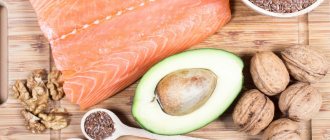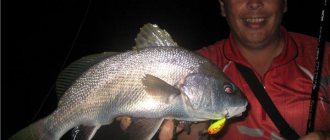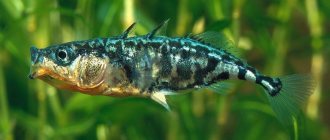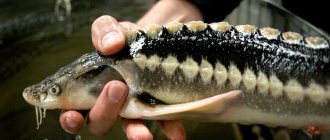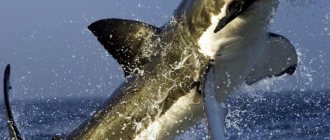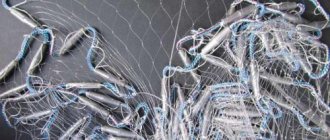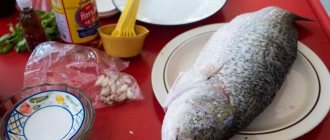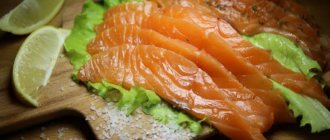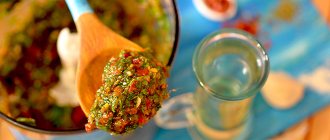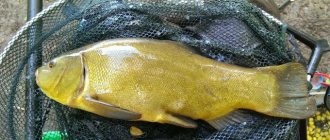Fat categories
Experts divide seafood into 3 categories, depending on fat content:
- The first category includes seafood that contains up to 4 percent fat.
- The second category contains varieties with a fat content of up to 8.5 percent.
- The third category consists of fish varieties that contain more than 8.5 percent fat.
Important point! The fat content of fish is not constant and varies depending on the time of year. The fattest fish before the breeding process.
Fish meat, regardless of variety, can contain from 14 to 27 percent protein and from 0.3 to 36 percent fat. As a rule, there are special tables that indicate the percentage of fat, depending on the type of fish, from which it is permissible to prepare dietary dishes.
The benefits of fish
Fish fillet is pure protein, a mass of macro- and microelements. The main fish product is fish oil. It contains a large amount of polyunsaturated fatty acids omega-3 and omega-6 .
The usefulness of the fish itself depends on the habitat: sea/ocean or river/lake. In river water, the amount of fats and proteins is lower, and there is no iodine and bromine in the composition, which are found in sea and ocean water. Therefore, sea fish is much healthier than river fish.
In addition to high saturation with iodine and bromine, together with them you can get in the required quantities:
- phosphorus;
- potassium;
- magnesium;
- sodium;
- sulfur;
- fluorine;
- copper;
- iron;
- zinc;
- manganese;
In addition to microelements, the body receives a number of vitamins:
- IN 1;
- AT 2;
- AT 6;
- AT 12;
- PP;
- H;
- C;
- A;
- D.
Fish for dietary nutrition
Since there are many things you are not allowed to eat on a diet, fish is not only a salvation, but also an assistant to the body.
Allowed to eat:
- river perch;
- navaga;
- hake;
- zander;
- carp;
- flounder;
- cod;
- blue whiting
These varieties are low in calories, but at the same time tasty and nutritious. They will help diversify a narrow diet. Fish can be combined with many side dishes, which can dilute the tastelessness of unsalted buckwheat or rice.
Non-diet fish
Fat fish are most often found in cold waters; fat helps them survive.
There are a lot of such fish in the world, but not all of them are healthy and suitable for eating; the following types can be distinguished from the “healthy” varieties:
- salmon;
- mackerel;
- tuna;
- sardine;
- trout;
- herring.
- halibut;
They contain large amounts of EPA and DHA. Many types of these fish require a special cooking process, so before cooking it is necessary to refresh your memory with the characteristics of the variety.
Moderate fat fish
This category includes fish whose fat content is 4-8%.
Some marine fish with moderate fat content include:
- horse mackerel;
- catfish;
- tuna;
- pink salmon;
- herring;
- perch;
- chum salmon;
- bream.
The river inhabitants compiled the following list:
- trout;
- carp;
- catfish;
- crucian carp;
- carp;
- salmon.
Such fish provides the human body with high-quality protein. This product is useful to everyone without exception, and athletes simply need it. Some varieties are included in the diet menu, as they provide the body with many important nutrients. This fish is not contraindicated for children; they can eat carp, salmon, perch, and trout.
Fatty fish

There are varieties of fish that are unsuitable for dietary nutrition. These include fish such as:
- Mackerel and catfish.
- Sprat and stellate sturgeon.
- Fatty herring and eel.
- Sturgeon and halibut.
- Saira.
These fish breeds have a fairly high fat content (more than 8.5 percent), and their energy value ranges from 270 to 350 kcal per 100 grams of product.
Despite such a high percentage of fat, these fish breeds are considered the most beneficial for humans, since their meat contains more iodine and fatty acids. The presence of such components allows a person to fight a number of ailments associated with the cardiovascular system, as well as metabolic processes in the body.
Unfortunately, they are not suitable for preparing dietary meals.
Low-calorie fish list. List of low-fat fish varieties for diet and weight loss
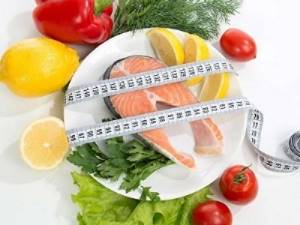
Nutritionists consider fish to be one of the healthiest foods in terms of nutritional value. It contains essential minerals, vitamin complexes, saturated and unsaturated fatty acids, which are very important for the human body. Fish is certainly included in therapeutic nutrition, both for certain conditions and ailments that require a gentle diet, and as part of diets for weight loss.
This product is digested faster, is well absorbed and does not contain many calories. But among different types of fish there is a special group of products that are most optimal for the diet - low-fat or lean fish.
List of varieties
The recommendation to eat lean fish is often given to pregnant and lactating women, and those who want to eliminate the problem of excess weight, as well as people with diseases of the digestive system, circulatory system, heart, and kidneys. But what kind of lean fish is it?
The fat content of a product is an important characteristic of nutritional value. Fat content does not always depend only on the type or variety of fish; sometimes the season of catching also affects it. The fat content of an individual of any species increases slightly during spawning.
Based on the basic presence of fats in 100 grams of product, several categories of fish are distinguished.
- Fatty – initially contains 8% fat or more. Typically, the calorie content of these varieties ranges from 235 to 275 kcal and higher. This includes mackerel, herring, halibut, sturgeon, catfish, saury and a number of others.
- Moderate – contains fat in the range of 3.5 to 8%. The calorie content of these varieties, as a rule, ranges from 115 to 145 kcal. The moderate or low-fat category includes pink salmon, catfish, trout, tuna, chum salmon, sea bass, and herring.
- Low-fat, lean - contains less than 4% fat, calorie content usually ranges from 75 to 110 kcal. This group usually includes pollock, silver hake, navaga, blue whiting, bream, pike perch, flounder, cod, pike, and burbot.
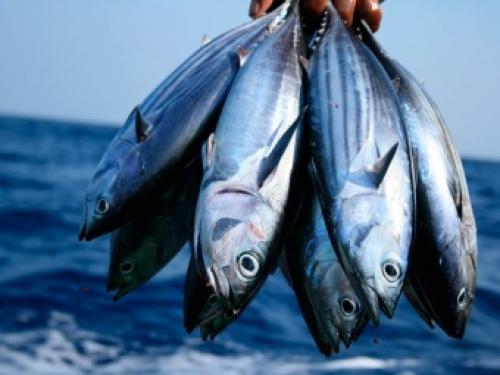
Medium fat varieties

Such varieties have an average level of fat content and include:
- Catfish and mackerel.
- Carp and silverfish.
- Carp and redeye.
- Herring and anchovies.
- Pink salmon and herring are low-fat.
- Pike perch and smelt.
- Ide and bream.
- Salmon and sea bass.
- Tuna.
The energy value of these fish species ranges from 126 to 145 kcal per 100 grams of finished product.
These types of fish are suitable for preparing dietary dishes, but they should only be consumed with the permission of a specialist. These types of seafood are high in protein, making them suitable for sports nutrition. To preserve the usefulness of seafood, it is better to prepare dishes from these types of fish by stewing, salting, smoking, and also steaming.
What kind of fish can you eat while losing weight?
In non-carbohydrate nutrition systems when losing weight, it is often advised to replace meat with fish. However, not all varieties are equally useful. In terms of calorie content, fatty mackerel is far ahead of lean pork. In order not to be mistaken, we will divide the fish according to fat content.
| Fat content per 100 grams of fish and seafood | |
| High fat content (10 g or more) | Atlantic herring, eel, sturgeon, stellate sturgeon, mackerel, sardines |
| Medium fat (from 5 to 10 grams) | Salmon (Atlantic, coho, sockeye, chinook), bluefish, catfish, rainbow trout, swordfish, catfish, capelin, carp, chum salmon, salmon, pink salmon |
| Low Fat (2 to 5 grams) | tilapia, halibut, mussels, sea bass, oysters, Pacific sea bass, chum salmon, tuna, hake |
| Very low fat content (less than 2 grams) | Pollock, pike, pike perch, crucian carp, cod, navaga, flounder, haddock, lobster, scallops, shrimp |
To get an idea of the fat content of seafood, pay attention to the color of the meat. If it is light, you have a lean variety of fish. The darker the fillet, the more calories. Think herring, salmon or mackerel.
Of course, scientists say that fatty fish is the healthiest. It contains a large amount of necessary substances. But when losing weight, you should forget about it. Or reduce your consumption to a small piece per week.
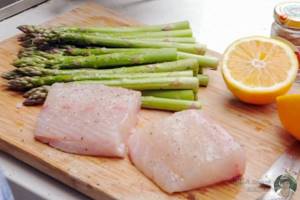
Let's mention low-fat fish varieties separately. They have no carbohydrates. That's why they are so popular among fans of low-carb diets. So switching to fish while dieting can help delay the need to lower your carbohydrate intake.
ARTICLES ON THE TOPIC:
- What foods will help speed up metabolism, burn fat and promote weight loss?
- What is the difference between animal and plant protein + list of foods with high…
| Product (per 100 grams) | Squirrels | Fats | Carbohydrates | Calorie content |
| Low Fat (2 to 5 grams) | ||||
| Tuna | 24,4 | 4,6 | 0 | 139 |
| Sea bass | 18,2 | 3,3 | 0 | 103 |
| Far Eastern flounder | 15,7 | 3 | 0 | 90 |
| Vobla | 18 | 2,8 | 0 | 95 |
| Bream | 17,1 | 4,4 | 0 | 105 |
| Carp | 18,2 | 2,7 | 0 | 97 |
| White-winged halibut | 18,9 | 3 | 0 | 103 |
| Hake | 16,6 | 2,2 | 0 | 86 |
| Oceanic horse mackerel | 18,5 | 4,5 | 0 | 114 |
| Very low fat content (less than 2 grams) | ||||
| Pollock | 15,9 | 0,9 | 0 | 72 |
| Blue whiting | 18,5 | 0,9 | 0 | 82 |
| Haddock | 17,2 | 0,5 | 0 | 73 |
| Cod | 16 | 0,6 | 0 | 69 |
| River perch | 18,5 | 0,9 | 0 | 82 |
| Pike | 18,4 | 1,1 | 0 | 84 |
| Zander | 18,4 | 1,1 | 0 | 84 |
| crucian carp | 17,7 | 1,8 | 0 | 87 |
Lean fish has less fat than the leanest meat. You can get the same amount of protein from everyone, but consume fewer calories. This will allow you to keep your carbohydrate intake to a relatively moderate level and you won't feel too depleted. Even in the evening you are allowed to eat fish while losing weight. The excess will definitely not be put aside
